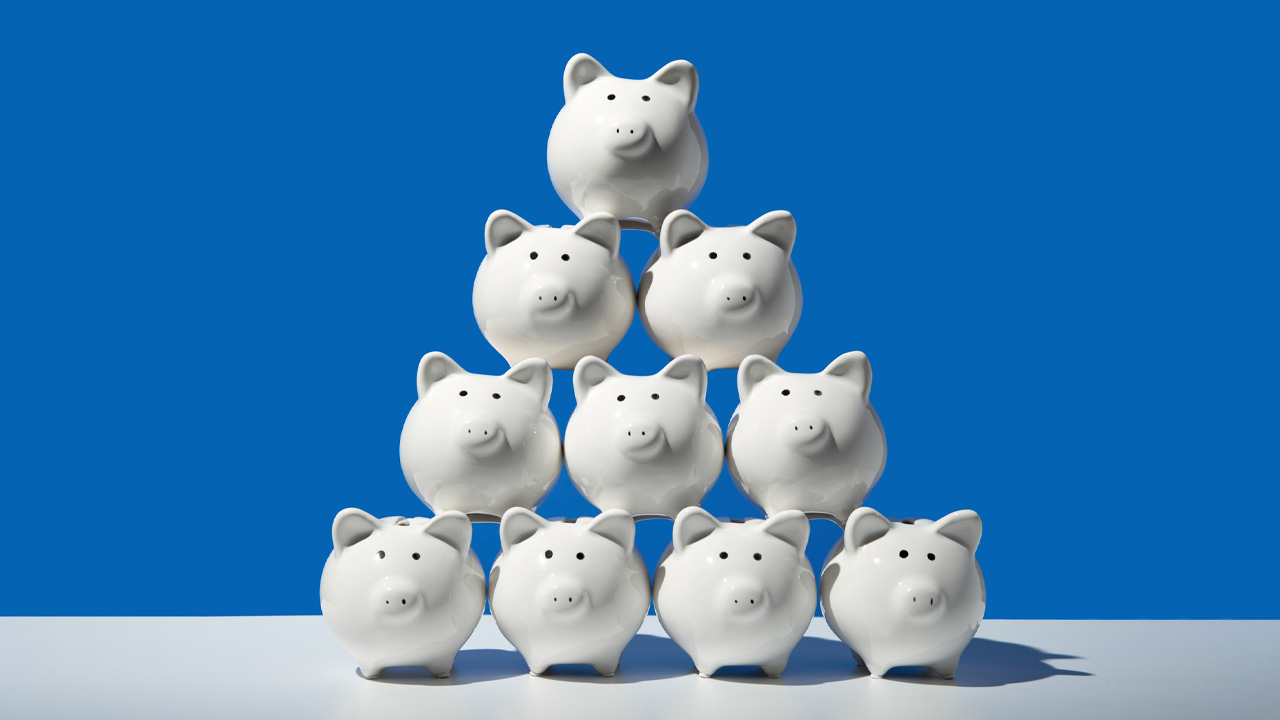What Is Afterpay Canada and Should I Use It?

Ariana Grande said it best when she crooned “I see it, I like it, I want it, I got it” in her hit 2019 song “7 Rings.” While Grande was talking about her own spending habits (and the fact that, as a millionaire, she can effectively buy whatever the heck she wants without a second thought), the mentality can similarly be applied to the spending habits—or at least shopping mentality—of even non-superstars. Because for many people, buying things is super fun! But not *as* fun? Budgeting or thinking about the money needed to save up and buy said things. Which is where Afterpay comes in. The popular online installment payment program—which launched in Australia in 2014 and has been running in the U.K., New Zealand and the U.S. for the last few years—officially launched in Canada in August 2020, allowing Canadian consumers to pay for purchases from brands like Aritzia, Mary Young and Roots in four installments. (Translation: You can receive those über coveted Aritzia Melina pants ASAP, without having to pay for them in full upfront.) It’s a payment program that leans *heavily* into the idea of instant gratification and seems almost too good to be true, but how *exactly* does it work? And also, seriously, what’s the catch?
Here, everything you need to know about Afterpay and installment programs like it including whether or not they are, in fact, too good to be true.
So, what exactly *is* Afterpay and how does it work?
If you’re a frequent online shopper, chances are that you’ve come across Afterpay in some capacity while perusing Reformation late at night. (The company *does* currently work with over 64,000 retailers globally, according to Afterpay, which is no small number.) Afterpay is an installment payment plan that breaks down the price of a product into multiple smaller, interest-free installments. So for example, if a product is $100, with Afterpay, a consumer would pay $25 right away, and then $25 every two weeks for the next six weeks (so four payments in total). The best part? Your item ships out immediately, meaning that you don’t have to wait until you’ve completed payments to rock your latest purchase.
With Afterpay (as well as a few other options like PayBright, QuadPay and Sezzle), consumers can choose to use either their debit or credit card to make purchases. Afterpay encourages using debit to ensure that payments come from your bank account as opposed to racking up on a credit card, which can potentially lead to debt. “Our model is really to avoid overspending and to avoid getting into debt,” says Melissa Davis, Afterpay’s head of North America. “So we never charge any interest or any additional fees above and beyond the price of the product, which is very different than some of our competitors that do have products that charge the customers significant financing charges.” With no need for credit checks or for consumers to provide their social security numbers, “it’s really making sure that the consumers are not getting into any kind of revolving debt and [are] able to just pay off their debit card [with] funds that they currently have available,” she continues. “Our model is very simple and unique, but it’s what makes the customer love and loyalty so strong because when you see Afterpay, you always know exactly what product you’re going to get.”
Read this next: How to Bring Up Finances on a Date Without Killing the Mood
Why does it seem like payment plans like Afterpay are suddenly everywhere?
And it’s a product that’s seemingly in high demand. While Afterpay launched in Canada in August 2020, it’s far from the only installment payment plan available to Canadians, who can also shop using services like PayBright, Sezzle, QuadPay, Splitit and Affirm. And globally, there’s a demand for these types of services. According to Davis, Afterpay alone currently caters to more than 11 million consumers worldwide, many of which are millennials.
So, why are millennials drawn to these payment plans? One big reason appears to be that the generation is (rightfully) afraid of going into debt. “There is a big fear of getting into debt and a revolving line of debt,” Davis says of the younger generations. In fact, it’s something we’ve seen proven; a 2019 survey from Credible found that American millennials were more scared of credit card debt than dying.
In addition to this fear, Davis says that gen Z and millennial folks are just more financially responsible when it comes to debt. Perhaps influenced by the amount of credit card debt people faced after the 2008 financial crisis, “they aren’t opening credit cards, they aren’t paying for things beyond their means,” she says. “They are looking to things like Afterpay to be able to better budget out their purchases, and to understand where their money is going and have a better flow of funds.”
There’s a bonus for retailers, too. According to Davis, many retailers who partner with Afterpay have seen increases in average order value as well as new customer acquisition, meaning people are spending *more* money on these brands and that brands are gaining more new customers, thanks in part to Afterpay’s own site. “One of the many benefits that we provide is actually sending traffic to our retailers from the consumer base that we already have and the network that we already have,” she says. Current Afterpay customers—happy with the service and their ability to spread out payments without incurring interest—often use the company’s site directory to see what other brands they can shop in a similar way. “So it’s a huge source of new traffic and new referrals to our retail partners.”
In a November 2020 CBC article, Kyle Houseman, the president of Vancouver-based brand Native Shoes, said that while only 5% of the company’s customers used Afterpay at that time, those that did tended to spend more money. “Naturally, when you are going to spend a hundred dollars on an item today and you’ll only have to pay $25, [now] you can buy both the dress and the shoes,” Davis explains of this method. “And so people feel great about their purchase and they’re only spending $50 today.”
Read this next: The Cost of Breaking Up
What happens if I don’t make a payment on time?
Now, for the big question: What happens if I miss a payment? Well, it depends on which service you’re going with. For service provider Klarna (which is only available outside of Canada and allows users to pay with both credit and debit cards), failing to meet your payment deadlines *could* affect your credit score, depending on which country you’re in, with the company admitting that U.K. accounts that aren’t paid within a few months can be passed along to debt collection agencies. In the United States, debit card users who fail to have sufficient funds available in their bank account—thus preventing Klarna from being able to withdraw the required amount—could incur late fees and the eventual dismissal of their account from the app. Yikes. But with others services, such as Afterpay Canada and PayBright, there’s no interest or additional charges if you miss a payment. “Everything is automatically debited from the user’s card,” Davis says. With 90% of Afterpay’s users using their debit cards, “if a user is late on a payment, they’re actually not allowed to use the platform until their repayment is made.” (The same goes for those who use credit cards as their form of payment.)
Davis says this incentivizes users *to* actually make their payments, by ensuring they have enough funds in their bank account to be withdrawn or enough credit available on their credit cards, because they want to continue using the service. (If you’re wondering what happens to retailers if you miss a payment, Afterpay assumes all responsibility, acting as an intermediary between the retailer and customer, and paying the retailer directly for the product on the assumption they’ll be paid back by the customer. But FYI, Afterpay charges its retailers between 4% to 6% on each purchase, which is a much steeper charge than credit card companies).
It *is* important to note that while Canadians using the service won’t have to contend with late fees, the company’s U.S. counterpart does list late fees in its terms of agreement. Per Chatelaine, American users are given a 10-day grace period, after which Afterpay U.S. can charge up to 25% of the original purchase price in late fees. (FYI, Clearpay is the company’s U.K. counterpart).
What do financial experts think of Afterpay?
Does this mean you should only shop Afterpay? Not so fast. While millennial money expert Jessica Moorhouse understands the convenience factor of services like Afterpay, she’s not entirely sold on the program. “It almost scares me because already as online consumers, we’re so unconscious of our spending,” Moorhouse says of the service. While some people may know exactly what’s in their digital shopping cart, pondering a purchase for days before making the decision to hit “Pay Now,” that’s not the case for many. “A lot of times when we buy things online or in person, we immediately forget how much actually we spent,” she says. And a “buy now, pay later” option may only increase that lack of awareness, prompting people who may not have the necessary funds to buy an item they want without really thinking it through. “If Afterpay didn’t exist, maybe you would take a step back and consider whether you should buy that or not,” Moorhouse says. “Maybe you can’t afford it right now, so maybe you should not buy this right now and wait until you actually have all the funds in your account… but with options like Afterpay, more people will think, ‘Oh, whatever, I’ll just do it.’”
And while paying off your purchase in a six-week time frame may sound great in theory, as Moorhouse points out, *a lot* can happen in that span of time (especially during a pandemic). “Six weeks is such a short window,” she says. “If you don’t have the money to buy whatever item it is now, are you sure you’re going to have the money in six weeks? Most likely not. A lot can happen in six weeks. You can lose your job.” Not to mention the fact that these installment programs put the onus on the consumer to decide whether or not to use credit or debit when purchasing, meaning there’s still the chance that they can rack up extra fees or debt with select payment programs should they be unable to re-pay the amount (for example, Sezzle charges fees if you fail to make a payment or move the payment date more than two times).
For Moorhouse, services like Afterpay feel like a justification to make purchases people know they should delay and save up for in advance. “It doesn’t make any sense to have a payment program set up with Sephora,” she says. (Paybright does, FYI.) “Those [products] aren’t essential. So just take a minute and wait, save up with a few paycheques and then buy whatever you need to buy.”
Read this next: 3 Millennial Money Pros Answer Your Most Taxing Tax Questions
What are some tips for saving if I don’t want to use Afterpay?
For those who are still looking to do some damage when it comes to shopping, but aren’t quite ready to try an installment payment plan, Moorhouse has some tips for saving up. “Try your best to practice conscious consumption [and] be more mindful with where your money’s going,” she advises. “Part of that is taking the time to make a budget.” Moorhouse recommends using spreadsheets to help (she has some available on her website, free of charge), outlining how much you’re earning and how much you’re actually spending. “Take a look at your spending for the past three months to see really, where is your money going,” she says. “That may be a good indicator to see ‘do I have a spending problem?’ or to figure out, ‘maybe I should kind of cool it down, because I’m realizing that I’m actually spending almost as much as I’m earning, which isn’t really helping me progress with saving and investing for my future.’”
In addition to this, Moorhouse recommends setting up a special savings account for expenses that aren’t monthly (like clothes shopping and haircuts, to name a few). “Consider it like a savings goal and you nickname your savings account ‘shopping,’ for when you do need to get new outfit or go to Sephora. And then every paycheque, make sure to put a percentage of that paycheque into that savings account.” Depending on your budget and what you earn, you can decide how much you’d like to put into your special fund every month. “And then you let that grow, grow, grow,” she says. This way, next time there *is* a sale at Sephora, you have the money saved up to spend.”There’s nothing wrong with spending, but [it’s important to] be mindful of where your money’s going and save that money up in advance so that you don’t get yourself into debt. So you can feel good about spending that money on yourself.”







